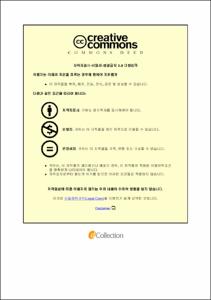Assessment of Force-Time Integral on Radiofrequency Lesion Size in an In Vitro Swine Contractile Model using Force Sensing Technology
- Abstract
- BACKGROUND: The contact force technology has enabled real-time catheter-tissue contact, accurately. Average contact force, as quantified by the force-time integral, correlates with lesion volume at a given power setting. However, little is known whether any of the time and force components that make up the force-time integral (FTI) play a more important role and what is better as a marker of FTI and force-power-time index (FPTI) considering power.
METHODS: RF energy was delivered on swine skeletal muscle at 4 fixed power settings of 15W, 25W, 30W and 40W for 6 variable of time duration (5, 10, 20, 30, 40 and 50 seconds) with 6 CF setting (5, 10, 20, 30, 40 and 50g) using Thermocool® SmartTouch® Catheter (Biosense Webster Inc., CA, US). Lesion depth, width and volume were measured and the incidence of steam pop was also recorded. Statistically, multiple linear regression analysis was used to explain the relationship between variables.
RESULTS: A total of 336 lesions were made according to experimental protocol. The effect of time was more than 1.6 to 2.9 times higher than that of force in the lesion volume. In the case of steam-pop, the effect of force was greater than the effect of time. The best discriminating cutoff values for steam-pop with the highest sensitivity and specificity were 700g·s (sensitivity=83.3%, specificity=74.2%) of FTI and 31,000 g·w·s (sensitivity=80.6%, specificity=97.7%) of FPTI. The area-under-curve was greater in FPTI (0.943) than FTI (0.870). In univariate linear regression analysis, FTI and FPTI had a significant effect on lesion formation. However, the explanatory power of the linear regression model was better explained by FPTI (56.4%) than FTI.(32.1%).
CONCLUSION: Under the same FTI, the time factor more affects lesion formation than the force factor. When power is included and analyzed, power has a greater impact on lesion formation and steam-pop than other factors. In order to resolve the limitation of FTI not taking the power into account, the proposed FPTI seems to be a better surrogate marker for predicting lesion formation and complication.
- Issued Date
- 2017
- Awarded Date
- 2018-02
- Type
- Dissertation
- Affiliation
- 울산대학교
- Department
- 일반대학원 의학과
- Advisor
- 최기준
- Degree
- Doctor
- Publisher
- 울산대학교 일반대학원 의학과
- Language
- eng
- Rights
- 울산대학교 논문은 저작권에 의해 보호받습니다.
- Appears in Collections:
- Medicine > 2. Theses (Ph.D)
- 파일 목록
-
-
Download
 200000002756.pdf
기타 데이터 / 525.58 kB / Adobe PDF
200000002756.pdf
기타 데이터 / 525.58 kB / Adobe PDF
-
Items in Repository are protected by copyright, with all rights reserved, unless otherwise indicated.